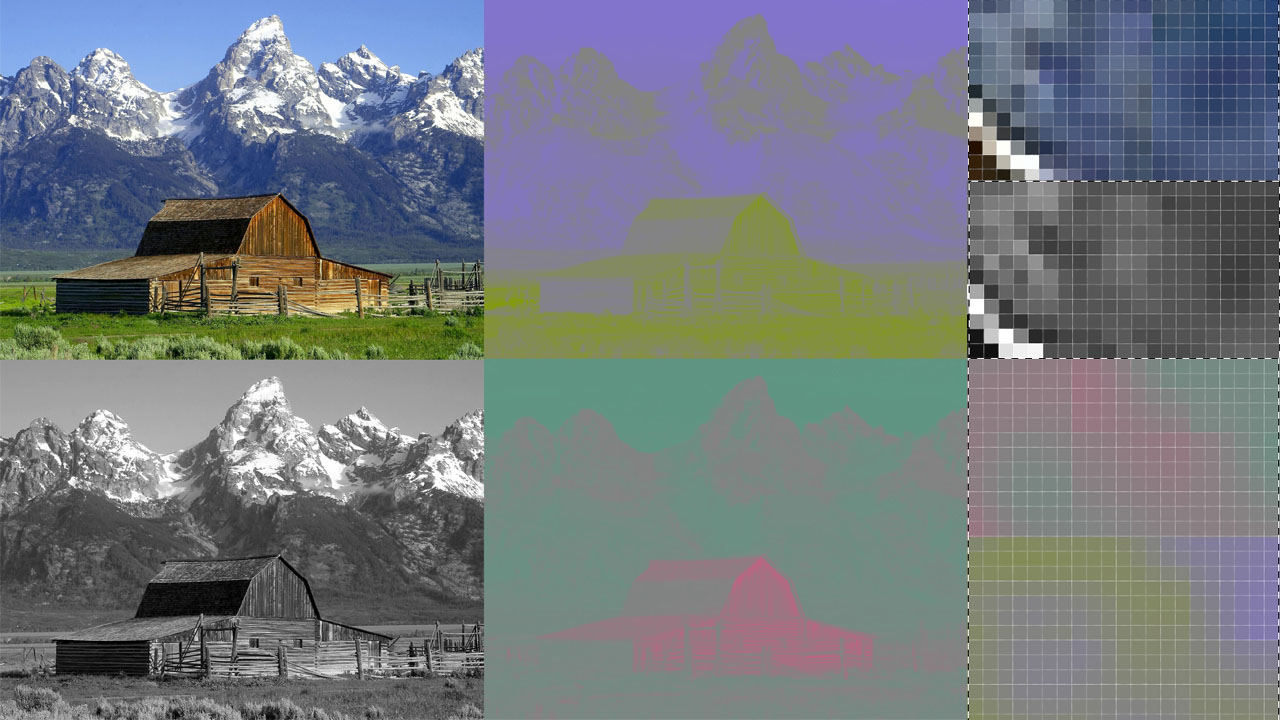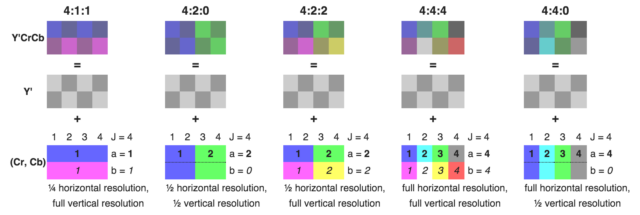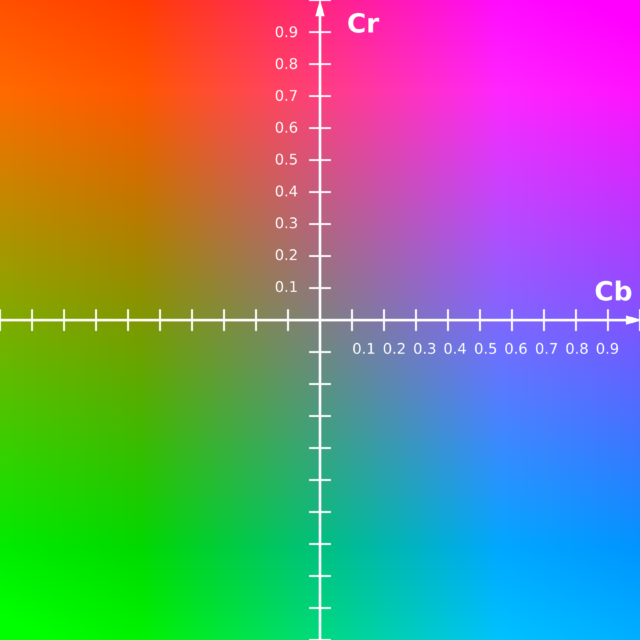
4:2:0, 4:2:2, 4:4:4—we are all used to seeing these ratios, but there is often a lot of haze around chroma subsampling and how it works. Hopefully, this can clear up the basics.
Compression
First off, chroma subsampling is a type of compression. It is different from the spatial and temporal compression used by most video compression algorithms to detect areas of the image in a frame, or across a number of frames where there is redundant information that can be described using less data.
Since human vision is much more sensitive to variations in brightness than color, we can split up image information into a luma component (Y’) and two chrominance components (Cb Cr) rather than the RGB primaries. This way we can reduce the resolution of the two chroma channels while keeping the luma channel at full resolution with very little loss in image quality.
The 4:2:2 Y’CbCr scheme requires two-thirds the bandwidth of (4:4:4) R’G’B’ but at normal viewing distances, there is little perceptible loss by sampling the color detail at a lower rate.
Luma
Luma represents the brightness of an image. It’s just the gamma corrected luminance information without any color. Below you can see a full-color image at the top with it’s constituent luma and chroma components.
Chrominance (Chroma)
Chrominance (chroma or C for short) is only the color information of the picture, separately from the accompanying luma signal (or Y for short).
Digitally, chrominance is represented as two color-difference components: Cb = B′ − Y′ (blue − luma) and Cr = R′ − Y′ (red − luma).
Cr and Cb values can be positive or negative from -1 to 1.
Sampling System and Ratios
The subsampling scheme is expressed as a three part ratio J:a:b (e.g. 4:2:2), that describes the number of luminance and chrominance samples in a conceptual region that is J pixels wide, and 2 pixels high.
J: horizontal sampling reference (width of the conceptual region). Usually, 4.
a: number of chrominance samples (Cr, Cb) in the first row of J pixels.
b: number of changes of chrominance samples (Cr, Cb) between the first and second row of J pixels.

The mapping examples given are only theoretical and for illustration. The above is taken from Wikipedia.
Considerations
Subsampling can easily reduce the size of an uncompressed image by 50% with minimal loss of quality.
However depending on what the post production demands may be, the full chroma information is not always redundant. For example, full chroma information is needed to pull high-quality chroma keys and will always be preferred for high-end color work.
Some image compression algorithms also remove redundant chroma information. By applying chroma subsampling before compression, information is removed from the image that could be used by the compression algorithm to produce a higher quality result with no increase in size.
In terms of what is good enough, many DSLR videographers are happily working with 4:2:0 media, and for some needs this is sufficient. For others, 4:2:2 hits a good compromise between having enough color information for manipulation in post production and smaller files than full 4:4:4 chroma. For the most demanding work, full resolution chroma is absolutely necessary. Keep in mind that you can’t convert upwards—if your media is originated and recorded at 4:2:0, converting to 4:2:2 cannot add back the missing chroma information that was never recorded.
These are all things to keep in mind when you’re considering recording formats for your next camera purchase, or designing a post workflow with specific requirements in mind. It may seem like a lot of work to dig into the technicalities, but having a good understanding of these details really sets you free to make good choices that have a real impact on the images you create.


























